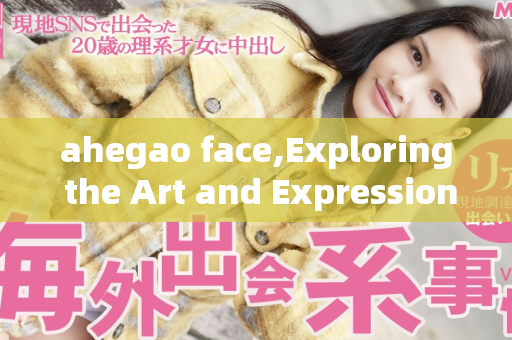
The concept of the "ahegao face," a term derived from Japanese adult animation and manga, has gained significant attention in both anime culture and wider internet communities. This expressive facial representation is characterized by exaggerated features, such as rolling eyes, an open mouth, and flushed cheeks, often depicting a state of ecstasy or intense pleasure. While its origins are rooted in the adult entertainment genre, the ahegao face has transcended its initial context to become a cultural phenomenon, eliciting both fascination and controversy among fans and critics alike.
At its core, the ahegao face serves as an artistic expression, encapsulating a heightened emotional state that is often exaggerated for comedic or dramatic effect. In anime and manga, facial expressions are crucial for conveying the inner feelings of characters, and the ahegao face takes this to an extreme. Artists utilize this trope not only to depict sexual pleasure but also to highlight moments of overwhelming excitement or surprise. This versatility has contributed to its popularity, allowing it to be employed in various contexts beyond its original intent.
Furthermore, the ahegao face has evolved into a meme within online communities, often used humorously or satirically. Fans create and share images, GIFs, and videos featuring this iconic expression, sometimes pairing it with nonsensical captions or other absurd visuals. This meme culture has sparked discussions about the boundaries of art and expression, prompting debates over the appropriateness of such imagery in public spaces versus private enjoyment. As a result, the ahegao face has become a symbol of both empowerment and controversy, reflecting the complexities of desire and artistic freedom in contemporary society.
Critics of the ahegao face often argue that it perpetuates unrealistic and objectifying portrayals of sexuality, particularly in the context of female characters. The exaggerated nature of the expression can lead to discussions about consent, representation, and the ethics of sexualized imagery. These critiques are essential in understanding the impact of anime and manga on societal norms and expectations surrounding sexuality. However, supporters argue that the ahegao face is merely a form of artistic expression and should be appreciated as such, devoid of any inherent moral implications.
Moreover, the ahegao face has inspired various forms of merchandise, ranging from apparel to collectibles, further embedding it within the fabric of anime culture. Conventions and cosplay events frequently see attendees donning ahegao-themed outfits or accessories, showcasing the face in playful and creative ways. This commercialization reflects a broader trend within fandoms where niche interests gain mainstream recognition, blurring the lines between subculture and popular culture.
As we explore the art and expression of the ahegao face, it becomes clear that it is more than just a simple facial expression; it encapsulates a complex interplay of art, desire, and cultural commentary. Whether viewed as a humorous meme, an artistic choice, or a contentious symbol, the ahegao face continues to provoke thought and conversation within the realms of anime, fandom, and beyond. In this age of digital expression, understanding the diverse meanings behind such imagery is crucial for navigating the intricate landscape of modern culture.









